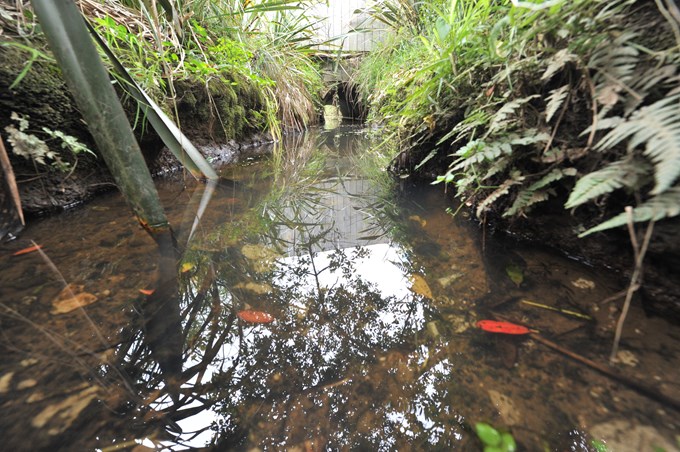Auckland Mayor Wayne Brown has doubled down on his support for the flood risk reduction programme ‘Making Space For Water’ by backing proposed blue-green network solutions in suitable areas throughout the region.
At today’s Governing Body meeting, the Healthy Waters team identified waterways awa suitable for blue-green network solutions as part of ‘Making Space For Water’. All these awa were subject to serious flooding during storm events in early-2023.
Blue-green networks, which link waterways (blue) and parks (green) with stormwater infrastructure, would make space for water to flow through the landscape. In heavy storms, rainfall would collect in these areas reducing risk to people and property.
“The initial evaluation of sites suitable for blue-green networks was based on risk assessments for flooding frequency and magnitude, and stability of surrounding buildings. More importantly, our teams gauged the rate water rises and the potential for entrapment or risk to life,” Mayor Brown said.
“These projects will depend on property acquisition and central government funding, and will be developed, scaled, and delivered as funding permits.”
The Auckland sites currently identified as suitable for proposed blue-green networks include:
- Wairau Creek (Totaravale, Lower Sunnynook, Milford)
- Kumeū River (Kumeū)
- Waimoko Stream (Swanson)
- Opanuku Stream (Henderson)
- Porters Stream (Glen Eden)
- Whau Stream (Blockhouse Bay)
- Cox’s Creek (Grey Lynn)
- Gribblehirst Park/St Leonards Road (Meola/Epsom)
- Te Auaunga Awa (Mt Roskill)
- Harania Creek (Mangere)
- Te Ararata Greenway (Mangere)
- Whangapouri (Pukekohe)
“The next step will be to develop risk profiles and some project objectives for each waterway. For these blue-green network projects to be effective, there would need to be some acquisition and removal of houses or buildings,” Mayor Brown said.
“Auckland Council is not a guarantor for private properties, nor is it responsible for compensating landowners for loss due to severe weather events. However, some financially prudent acquisition for stormwater solutions that benefit the wider community would be an appropriate use of public funding.”
The Mayor said, ‘Making Space For Water’ appears to be a well-conceived, integrated approach to flood risk reduction with the potential to deliver a diverse range of benefits for all Aucklanders, as part of the region’s recovery programme.
“We want to see social and environmental improvements in addition to fixing Auckland’s infrastructure. When we make space for water, we also make space for people and nature,” Mayor Brown said.
Today, the Mayor and Councillors agreed to note progress with the development of draft Tāmaki Makaurau Recovery Plan; a living document with sections to be released as work programmes are finalised, including ‘Making Space For Water’ and the proposed blue-green networks.
“I appreciate that Aucklanders require greater certainty. We are doing our best to move at pace, but the flood and storm recovery will be complex and requires engagement with local communities given the scale of activity proposed,” Mayor Brown said.
North Shore Ward Councillor Richard Hills, Chair of the Planning, Environment & Parks Committee, said he is pleased to see a stronger focus on blue-green infrastructure for future resilience across Tāmaki Makaurau.
“Projects that daylight streams, restore wetlands and naturalise waterways will help to reduce the impacts of flooding in our communities. They also have wider benefits, including lower carbon emissions, improved water quality, and native habitat for wildlife and recreation,” Councillor Hills said.
“Recently completed blue-green projects, such as Te Ara Awataha in Northcote and Te Auaunga in Mt Roskill, are great examples of how council can work with mana whenua, local communities, and central government to invest in our environment and make neighbourhoods more resilient against climate change and extreme weather events. I’m glad we are increasing this work.”
Next month, a briefing will be held for all Local Board members to discuss ‘Making Space For Water’. The final programme will go to the Governing Body for consideration in September 2023.
Last week, Auckland Council began engaging with the owners of residential properties most at risk from further storm events. Detailed risk assessments are needed to determine what properties are eligible for a Government supported buyout programme for ‘Risk Category 3’ properties.
Auckland Council’s Recovery Coordination Office will continue to engage with central government to define the arrangements for funding recovery efforts. The funding split and costs are still to be worked out.
“We would welcome a similar Government funding arrangement to the Christchurch earthquake, which sets a precedent for the ‘Risk Category 3’ buyout programme,” Mayor Brown said.


